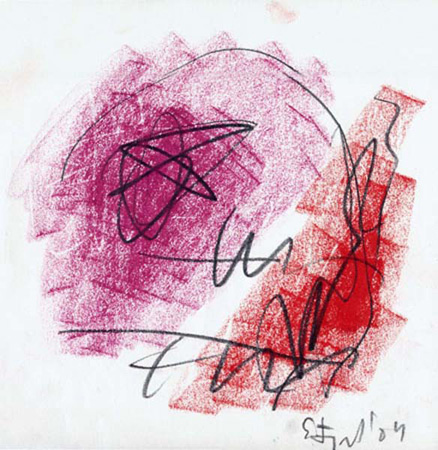Titolo: Omaggio a Tristano (lavori di pastelli ad olio in accompagnamento di ‘Tristano muore’ di Antonio Tabucchi)
Casa Editrice: Edizioni Polistampa
Anno: 2009
N.Pagine: 108
Formato: 30×30
Prezzo : 36,00 €
Acquista su:
– Amazon
– sienalibri.it
E’ possibile acquistare anche attraverso questo sito copie dell’ultimo libro di Karl Stengel “Omaggio a Tristano” al prezzo di € 36,00 spese postali incluse, inoltrando richiesta a questo indirizzo info@karlstengel.com o cellulare +39 335 626 3360 / fax +39 055 9171063
[ITA] “La vita non è in ordine alfabetico come credete voi. Appare… un po’ qua e un po’ là, come meglio crede”, dice Tabucchi nel libro che dà il via alle immagini di Karl Stengel. L’intensità del Tristano muore, gioiello letterario cui si ispira il lavoro illustrato in queste pagine, pare non avere cesure, rotture, stonature con l’opera dell’artista di origini ungheresi, che ne traduce la visionarietà in passaggi indelebili. Le parole dell’uno si inanellano con i colori e le forme dell’altro ad un ritmo che fa pensare ad un incontro improvviso.
[DEU] “Das Leben gibt sich nicht in alphabethischer Ordnung wie ihr das meint. Es scheint auf, etwas da und etwas dort, wie es ihm gut dünkt”, sagt Tristan in dem Buch, das den Anlass für die Bilder von Karl Stengel gibt. Zwischen der Intensität von ‘Tristan stirbt’ – literarisches Kleinod, an dem sich die auf den folgenden Seiten abgebildeten Arbeiten inspirieren – und dem Werk des Künstlers, der diese Hellsichtigkeit in unauslöschlichen Passagen übertragen hat, scheint es weder Schnitte noch Brüche oder Distonien zu geben. Die Worte des einen verschlingen sich mit den Farben und Formen des anderen in einem Rhythmus, der an eine überraschende Zusammenkunft denken macht.
[ENG] “Life does not follow alphabetical order as you believe. It appears… a little here and a little there, as it thinks best”, says Tabucchi in the book which is the starting-point for Karl Stengel’s images. The intensity of Tristano muore, the literary gem which inspires the work illustrated in these pages, seems not have cæsuras, or breaks, or be out of tune with the work of the Hungarian artist, who translates its dreaminess into indelible strokes. The words of the former are entwined in the colours and forms of the latter with a rhythm which makes one think of a sudden encounter.
Texts by Grazia Chiesa, Viola Lilith Russi


